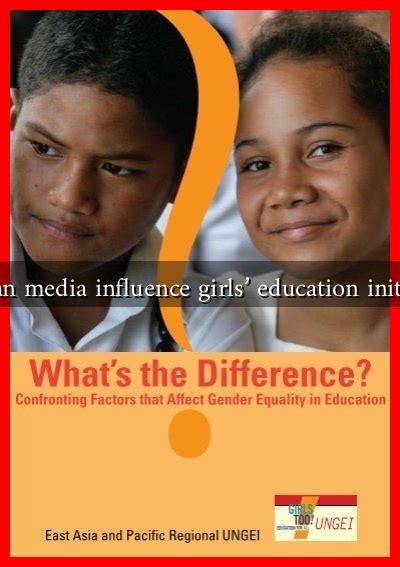-
Table of Contents
How Can Media Influence Girls’ Education Initiatives?
In the contemporary world, media plays a pivotal role in shaping perceptions, attitudes, and behaviors. This influence extends significantly to education, particularly in promoting girls’ education initiatives. With the rise of digital platforms, social media, and traditional media, the potential for advocacy and awareness has never been greater. This article explores how media can effectively influence girls’ education initiatives, highlighting strategies, examples, and the impact of various media forms.
The Power of Storytelling in Media
Storytelling is a powerful tool in media that can evoke emotions and inspire action. By sharing personal stories of girls who have overcome barriers to education, media can humanize the issue and create a sense of urgency. For instance, documentaries like “Girl Rising” have showcased the struggles and triumphs of girls in different parts of the world, effectively raising awareness and funds for educational initiatives.
- Emotional Engagement: Stories resonate with audiences, making them more likely to support initiatives.
- Visibility: Highlighting individual cases can bring attention to broader systemic issues.
- Inspiration: Success stories can motivate others to take action or support educational programs.
Social Media as a Catalyst for Change
Social media platforms have revolutionized the way information is disseminated and consumed. They provide a space for advocacy, community building, and mobilization. Campaigns like #BringBackOurGirls, which emerged after the abduction of schoolgirls in Nigeria, demonstrate how social media can galvanize global attention and action.
- Awareness Campaigns: Hashtags and viral posts can spread awareness rapidly.
- Community Engagement: Social media fosters connections among advocates, educators, and supporters.
- Fundraising Opportunities: Platforms like GoFundMe and Kickstarter allow for direct financial support to educational initiatives.
Traditional Media’s Role in Advocacy
While digital media is influential, traditional media such as television, radio, and print still play a crucial role in shaping public opinion. News reports, feature articles, and public service announcements can reach audiences who may not be active online. For example, the BBC’s “100 Women” series highlights issues affecting women and girls globally, including education.
- Informative Content: Traditional media can provide in-depth analysis and context to educational issues.
- Credibility: Established media outlets often carry more weight, influencing policymakers and stakeholders.
- Broader Reach: Traditional media can reach demographics that may not engage with social media.
Case Studies: Successful Media Campaigns
Several successful campaigns illustrate the impact of media on girls’ education initiatives:
- Malala Fund: Founded by Nobel laureate Malala Yousafzai, this organization uses media to advocate for girls’ education globally. Their campaigns leverage social media, documentaries, and partnerships with influential figures to raise awareness.
- UNESCO’s Global Education Monitoring Report: This initiative uses data and media to highlight the importance of education for girls, influencing policy decisions worldwide.
- Plan International’s “Because I Am a Girl”: This campaign uses various media forms to advocate for girls’ rights and education, successfully mobilizing support and funding.
Statistics Highlighting the Need for Media Engagement
Statistics underscore the importance of media in promoting girls’ education:
- According to UNESCO, 130 million girls worldwide are out of school.
- Girls who receive an education are less likely to marry early and more likely to contribute to their communities.
- Investing in girls’ education can yield a return of up to $30 for every $1 spent, according to the World Bank.
Conclusion: The Path Forward
Media has a profound ability to influence girls’ education initiatives by raising awareness, inspiring action, and mobilizing resources. Through storytelling, social media engagement, and traditional media advocacy, the narrative around girls’ education can shift, leading to meaningful change. As stakeholders in education, it is crucial to harness the power of media to ensure that every girl has the opportunity to learn and thrive. By continuing to support and amplify these initiatives, we can work towards a future where education is accessible to all girls, regardless of their circumstances.
For more information on girls’ education initiatives, visit UNICEF’s Girls’ Education page.

